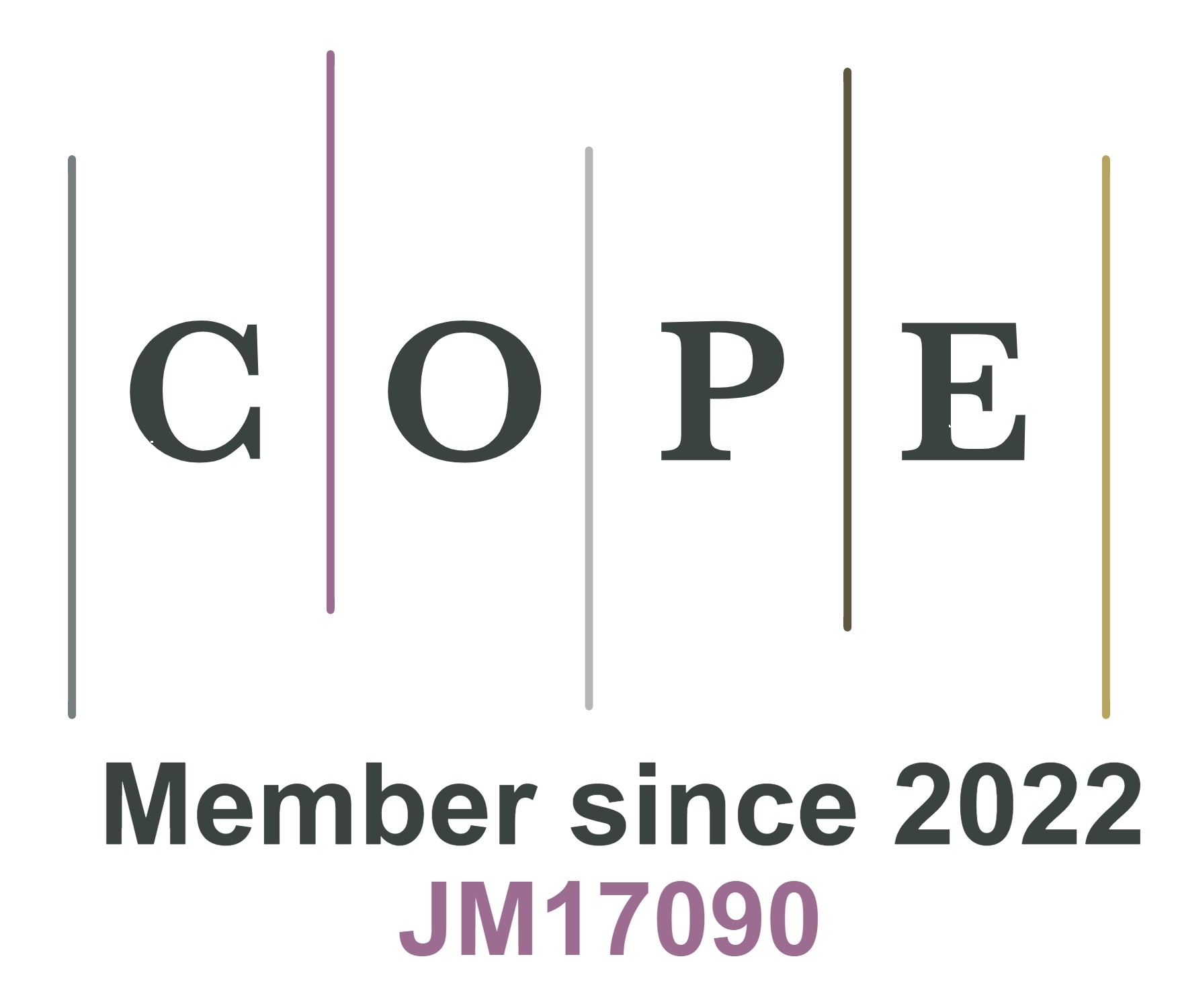REFERENCES
2. Ke, X.; Mu, X.; Chen, S.; et al. Reduced graphene oxide reinforced PDA-Gly-PVA composite hydrogel as strain sensors for monitoring human motion. Soft. Sci. 2023, 3, 1-12.
3. Wu, Y.; Zhang, Y.; Wu, H.; et al. Solvent-exchange-assisted wet annealing: a new strategy for superstrong, tough, stretchable, and anti-fatigue hydrogels. Adv. Mater. 2023, 35, e2210624.
4. Kim, S. D.; Park, K.; Lee, S.; et al. Injectable and tissue-conformable conductive hydrogel for MRI-compatible brain-interfacing electrodes. Soft. Sci. 2023, 3, 18.
5. Xu, Q.; Wu, Z.; Zhao, W.; et al. Strategies in the preparation of conductive polyvinyl alcohol hydrogels for applications in flexible strain sensors, flexible supercapacitors, and triboelectric nanogenerator sensors: an overview. Adv. Compos. Hybrid. Mater. 2023, 6, 783.
6. Liu, D.; Cao, Y.; Jiang, P.; et al. Tough, transparent, and slippery PVA hydrogel led by syneresis. Small 2023, 19, e2206819.
7. Lei, D.; Xiao, Y.; Shao, L.; Xi, M.; Jiang, Y.; Li, Y. Dual-stimuli-responsive and anti-freezing conductive ionic hydrogels for smart wearable devices and optical display devices. ACS. Appl. Mater. Interfaces. 2023, 15, 24175-85.
8. Jing, L.; Li, H.; Tay, R. Y.; et al. Biocompatible hydroxylated boron nitride nanosheets/poly(vinyl alcohol) interpenetrating hydrogels with enhanced mechanical and thermal responses. ACS. Nano. 2017, 11, 3742-51.
9. Zhao, L.; Zhang, J.; Cao, P.; et al. Fast water transport reversible CNT/PVA hybrid hydrogels with highly environmental tolerance for multifunctional sport headband. Compos. Part. B. Eng. 2021, 211, 108661.
10. Wu, S.; Hua, M.; Alsaid, Y.; et al. Poly(vinyl alcohol) hydrogels with broad-range tunable mechanical properties via the hofmeister effect. Adv. Mater. 2021, 33, e2007829.
11. Chen, X.; Wu, K.; Zhang, Y.; Liu, D.; Li, R.; Fu, Q. Tropocollagen-inspired hierarchical spiral structure of organic fibers in epoxy bulk for 3D high thermal conductivity. Adv. Mater. 2022, 34, e2206088.
12. Yang, J.; Shen, X.; Yang, W.; Kim, J. Templating strategies for 3D-structured thermally conductive composites: recent advances and thermal energy applications. Prog. Mater. Sci. 2023, 133, 101054.
13. Ren, L.; Guo, H.; Kang, L.; Niu, H.; Lv, R.; Bai, S. Lightweight, electrical insulating, and high thermally conductive all-polymer composites with reinforced interfaces. Compos. Sci. Technol. 2023, 240, 110080.
14. Guo, C.; He, L.; Yao, Y.; et al. Bifunctional liquid metals allow electrical insulating phase change materials to dual-mode thermal manage the Li-ion batteries. Nano-Micro Lett.2022, 14, 202.
15. Yun, J. Recent progress in thermal management for flexible/wearable devices. Soft. Sci. 2023, 3, 12.
16. Zhang, H.; Guo, Y.; Zhao, Y.; et al. Liquid crystal-engineered polydimethylsiloxane: enhancing intrinsic thermal conductivity through high grafting density of mesogens. Angew. Chem. Int. Ed. 2025, e202500173.
17. Lin, Y.; Kang, Q.; Liu, Y.; et al. Flexible, highly thermally conductive and electrically insulating phase change materials for advanced thermal management of 5G base stations and thermoelectric generators. Nano-Micro Lett.2023, 15, 31.
18. He, M.; Zhong, X.; Lu, X.; et al. Excellent low-frequency microwave absorption and high thermal conductivity in polydimethylsiloxane composites endowed by hydrangea-like CoNi@BN heterostructure fillers. Adv. Mater. 2024, 36, e2410186.
19. Miao, D.; Cheng, N.; Wang, X.; Yu, J.; Ding, B. Integration of Janus wettability and heat conduction in hierarchically designed textiles for all-day personal radiative cooling. Nano. Lett. 2022, 22, 680-7.
20. Zhang, F.; Zhang, J.; Zhang, K.; et al. Highly thermally conductive liquid crystalline epoxy resin vitrimers with reconfigurable, shape-memory, photo-thermal, and closed-loop recycling performance. Adv. Sci. 2025, 12, e2410362.
21. Guo, Y.; Wang, S.; Zhang, H.; et al. Consistent thermal conductivities of spring-like structured polydimethylsiloxane composites under large deformation. Adv. Mater. 2024, 36, e2404648.
22. Qin, M.; Huo, Y.; Han, G.; et al. Three-dimensional boron nitride network/polyvinyl alcohol composite hydrogel with solid-liquid interpenetrating heat conduction network for thermal management. J. Mater. Sci. Technol. 2022, 127, 183-91.
23. Tian, R.; Jia, X.; Bai, Y.; Yang, J.; Song, H. Fluorinated graphene thermally conductive hydrogel with a solid-liquid interpenetrating heat conduction network. ACS. Appl. Mater. Interfaces. 2024, 16, 1451-60.
24. Kazimierska-Drobny, K.; El, F. M.; Kaczmarek, M. Determination of mechanical and hydraulic properties of PVA hydrogels. Mater. Sci. Eng. C. Mater. Biol. Appl. 2015, 48, 48-54.
25. Li, W.; Qiao, K.; Zheng, Y.; et al. Preparation, mechanical properties, fatigue and tribological behavior of double crosslinked high strength hydrogel. J. Mech. Behav. Biomed. Mater. 2022, 126, 105009.
26. Duan, S.; Shi, Q.; Hong, J.; et al. Water-modulated biomimetic hyper-attribute-gel electronic skin for robotics and skin-attachable wearables. ACS Nano2023, 1355-71.
27. Ji, D.; Liu, P.; Im, P.; Shin, S.; Kim, J. Thermal interface hydrogel composites mechanically compliant with curvy skins and rigid electronic modules. Adv. Funct. Mater. 2024, 34, 2402144.
28. Xu, S.; Cai, S.; Liu, Z. Thermal conductivity of polyacrylamide hydrogels at the nanoscale. ACS. Appl. Mater. Interfaces. 2018, 10, 36352-60.
29. Zhang, Z.; Tan, S.; Bao, Z.; Wu, Y.; Wang, C. Thermal conductivity of PNIPAm hydrogels and heat management as smart windows. Macro. Mater. Eng. 2023, 308, 2200566.
30. Zhang, M.; Yang, Y.; Li, M.; et al. Toughening double-network hydrogels by polyelectrolytes. Adv. Mater. 2023, 35, e2301551.
31. Singh, V.; Bougher, T. L.; Weathers, A.; et al. High thermal conductivity of chain-oriented amorphous polythiophene. Nat. Nanotechnol. 2014, 9, 384-90.
32. Tu, H.; Xie, K.; Lin, X.; et al. Superior strength and highly thermoconductive cellulose/boron nitride film by stretch-induced alignment. J. Mater. Chem. A. 2021, 9, 10304-15.
33. Candadai, A. A.; Weibel, J. A.; Marconnet, A. M. Thermal conductivity of ultrahigh molecular weight polyethylene: from fibers to fabrics. ACS. Appl. Polym. Mater. 2020, 2, 437-47.
34. Zhang, Y.; Ruan, K.; Zhou, K.; Gu, J. Controlled distributed Ti3C2Tx hollow microspheres on thermally conductive polyimide composite films for excellent electromagnetic interference shielding. Adv. Mater. 2023, 35, e2211642.
35. Han, Y.; Ruan, K.; He, X.; et al. Highly thermally conductive aramid nanofiber composite films with synchronous visible/infrared camouflages and information encryption. Angew. Chem. Int. Ed. 2024, 63, e202401538.
36. Uetani, K.; Okada, T.; Oyama, H. T. In-plane anisotropic thermally conductive nanopapers by drawing bacterial cellulose hydrogels. ACS. Macro. Lett. 2017, 6, 345-9.
37. Wu, T.; Zhu, J.; Yu, H.; Qu, S.; Yang, W. Stretch induced thermal conduction anisotropy of hydrogel. Int. J. Heat. Mass. Transfer. 2022, 185, 122445.
38. Lin, S.; Liu, J.; Liu, X.; Zhao, X. Muscle-like fatigue-resistant hydrogels by mechanical training. Proc. Natl. Acad. Sci. U. S. A. 2019, 116, 10244-9.
39. Chen, Y.; Sun, X.; Luo, L.; et al. Super strong and tough PVA hydrogel fibers based on an ordered-to-disordered structural construction strategy targeting artificial ligaments. Adv. Funct. Mater.2024.
40. Mredha, M. T. I.; Guo, Y. Z.; Nonoyama, T.; Nakajima, T.; Kurokawa, T.; Gong, J. P. A facile method to fabricate anisotropic hydrogels with perfectly aligned hierarchical fibrous structures. Adv. Mater. 2018, 30, 1704937.
41. Gu, L.; Jiang, Y.; Hu, J. Scalable spider-silk-like supertough fibers using a pseudoprotein polymer. Adv. Mater. 2019, 31, e1904311.
42. Wang, W.; Wang, Y.; Zheng, J.; et al. A vasculatural hydrogel combined with Prussian blue for solar-driven vapor generation. J. Mater. Chem. A. 2022, 10, 12608-15.
43. Zhang, L.; Wang, K.; Weng, S.; Jiang, X. Super strong and tough anisotropic hydrogels through synergy of directional freeze-casting, metal complexation and salting out. Chem. Eng. J. 2023, 463, 142414.
44. Mredha, M. T. I.; Le, H. H.; Tran, V. T.; Trtik, P.; Cui, J.; Jeon, I. Anisotropic tough multilayer hydrogels with programmable orientation. Mater. Horiz. 2019, 6, 1504-11.
46. Lo Nostro P, Ninham BW. Hofmeister phenomena: an update on ion specificity in biology. Chem. Rev. 2012, 112, 2286-322.
47. Zou, H.; Meng, X.; Zhao, X.; Qiu, J. Hofmeister effect-enhanced hydration chemistry of hydrogel for high-efficiency solar-driven interfacial desalination. Adv. Mater. 2023, 35, e2207262.
48. Sun, X.; Mao, Y.; Yu, Z.; Yang, P.; Jiang, F. A biomimetic “salting out-alignment-locking” tactic to design strong and tough hydrogel. Adv. Mater. 2024, 36, e2400084.
49. Lin, X.; Zhang, X.; Nie, Z.; et al. A highly aligned X-shaped hydrogel fiber via cooperative roles of amorphous and crystalline network mediated by Hofmeister effect. Polymer 2024, 292, 126538.
50. He, Q.; Huang, Y.; Wang, S. Hofmeister effect-assisted one step fabrication of ductile and strong gelatin hydrogels. Adv. Funct. Mater. 2018, 28, 1705069.
51. Zhang, J.; Dang, L.; Zhang, F.; Zhang, K.; Kong, Q.; Gu, J. Effect of the structure of epoxy monomers and curing agents: toward making intrinsically highly thermally conductive and low-dielectric epoxy resins. JACS Au.2023, 3, 3424-35.
52. Rodríguez-Martínez, X.; Saiz, F.; Dörling, B.; et al. On the thermal conductivity of conjugated polymers for thermoelectrics. Adv. Energy. Mater. 2024, 14, 2401705.
53. Wang, Z.; Wu, Z.; Weng, L.; et al. A roadmap review of thermally conductive polymer composites: critical factors, progress, and prospects. Adv. Funct. Mater. 2023, 33, 2301549.
54. Yuan, S. J.; Peng, Z. Q.; Rong, M. Z.; Zhang, M. Q. Enhancement of intrinsic thermal conductivity of liquid crystalline epoxy through the strategy of interlocked polymer networks. Mater. Chem. Front. 2022, 6, 1137-49.
55. Hossain, M. M.; Olamilekan, A. I.; Jeong, H.; et al. Diacetylene-containing dual-functional liquid crystal epoxy resin: strategic phase control for topochemical polymerization of diacetylenes and thermal conductivity enhancement. Macromolecules 2022, 55, 4402-10.










